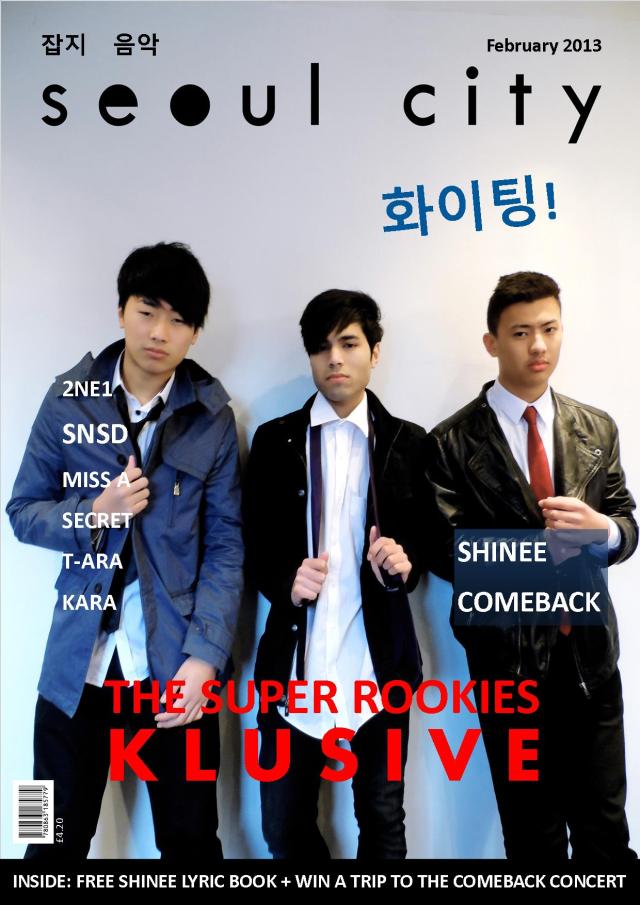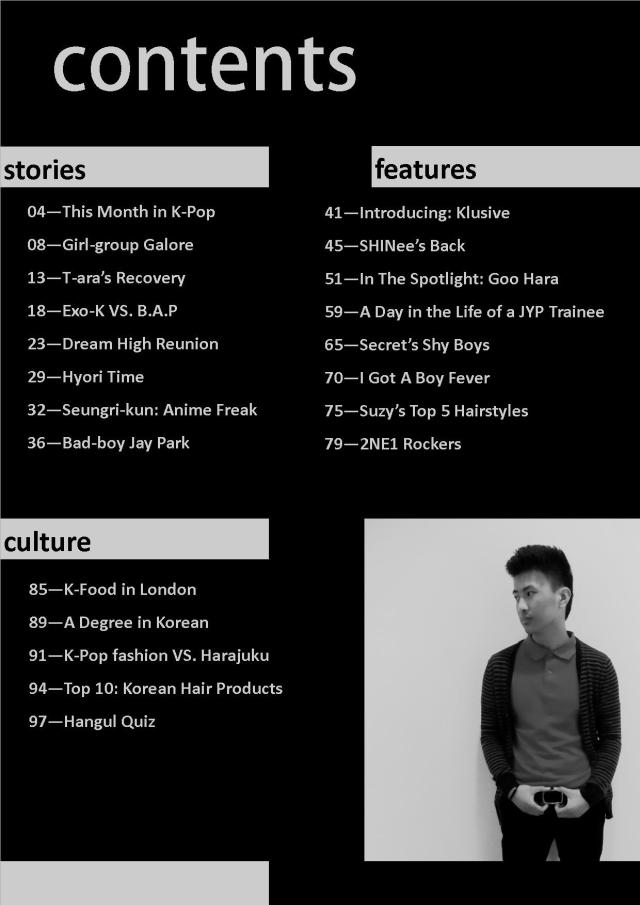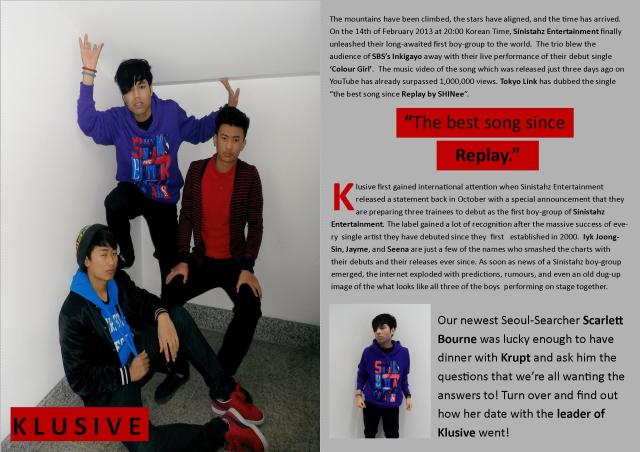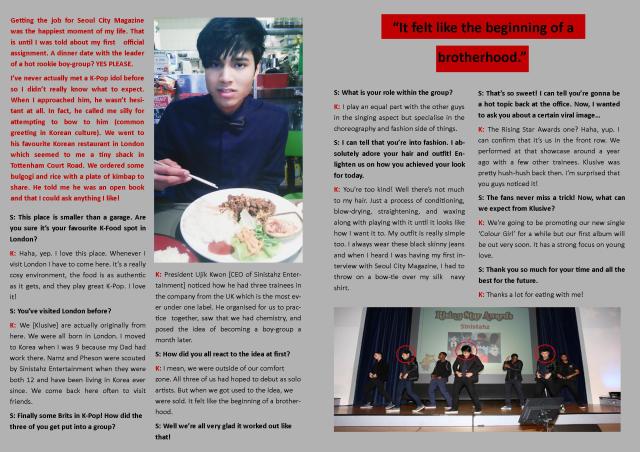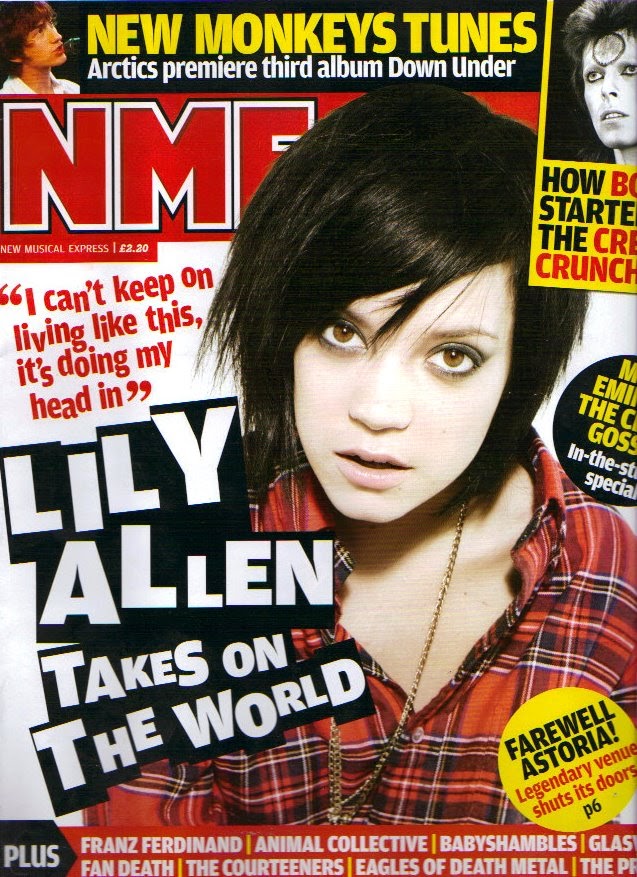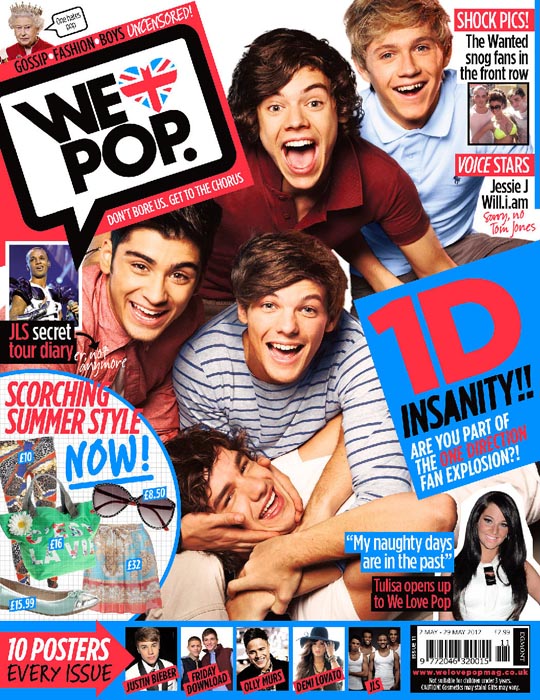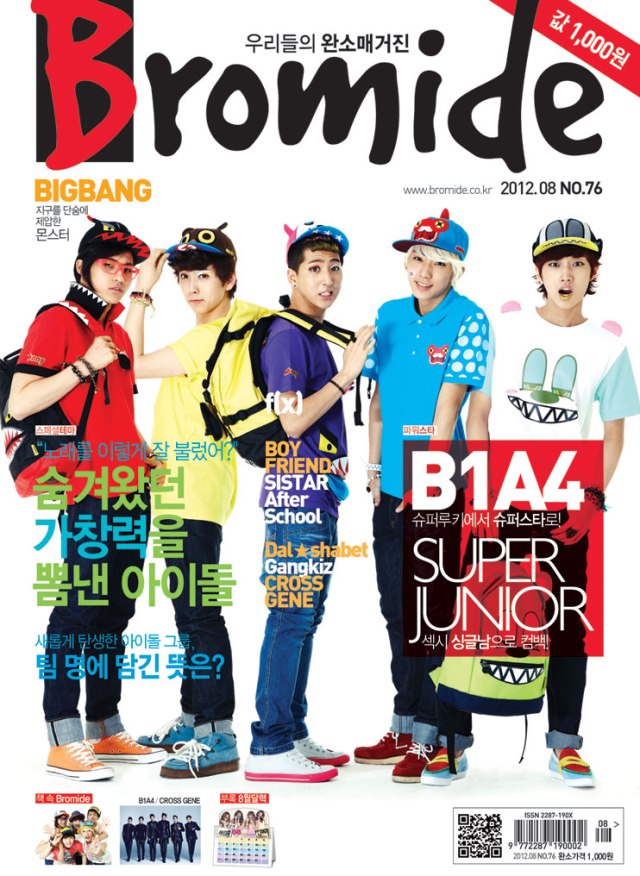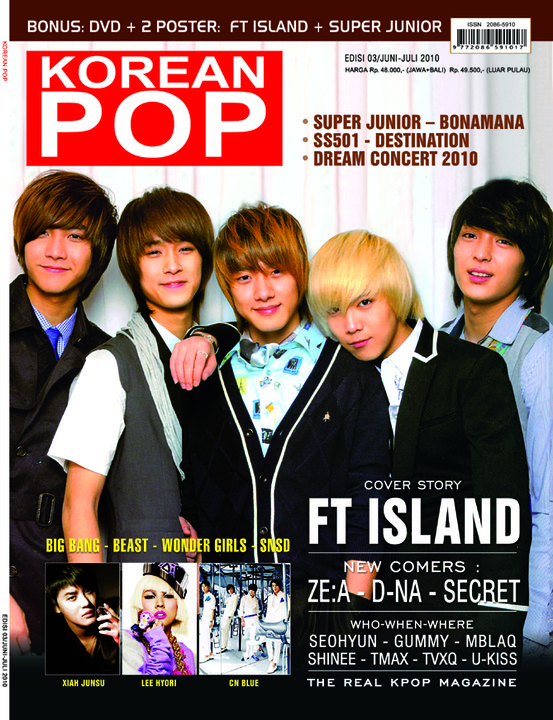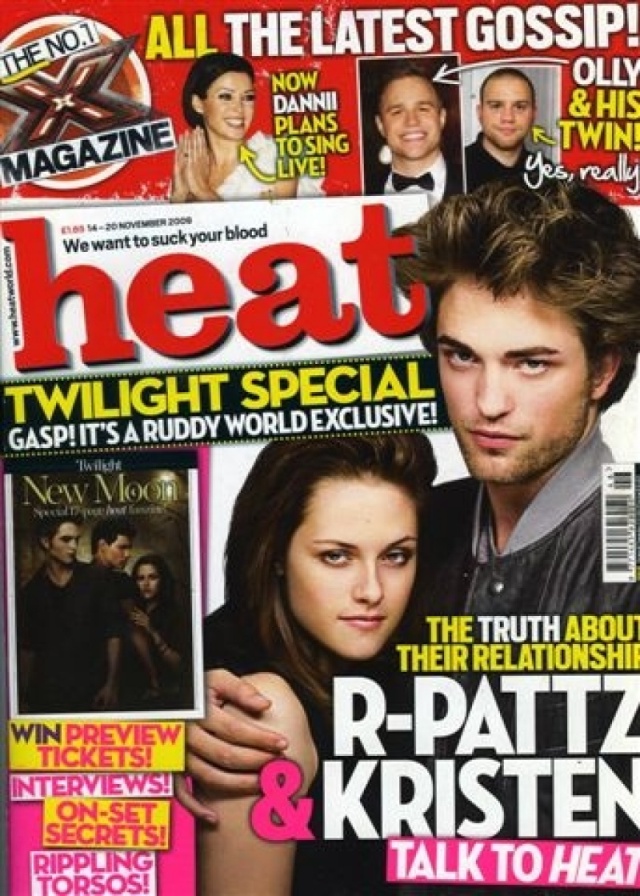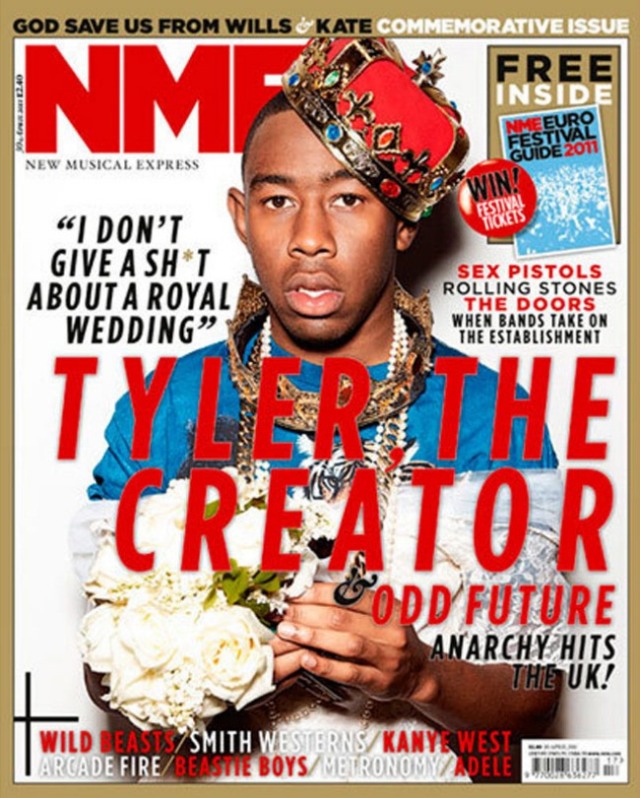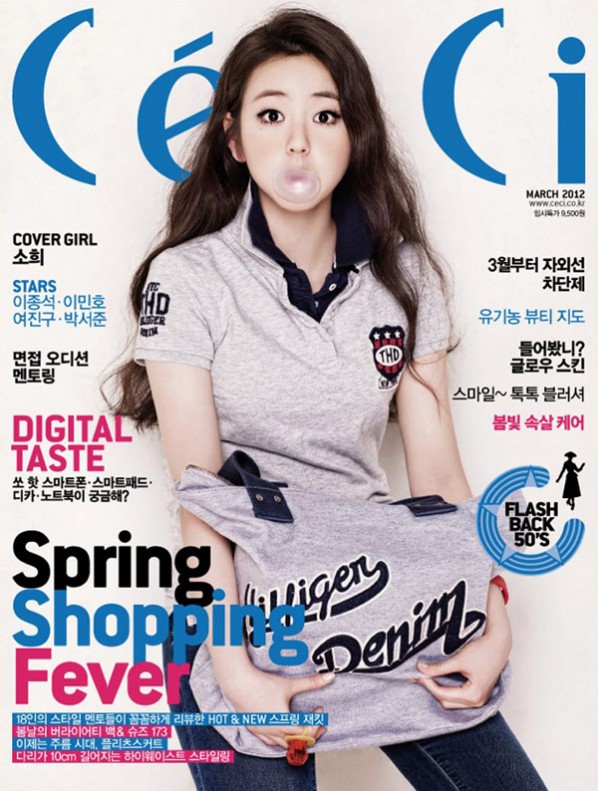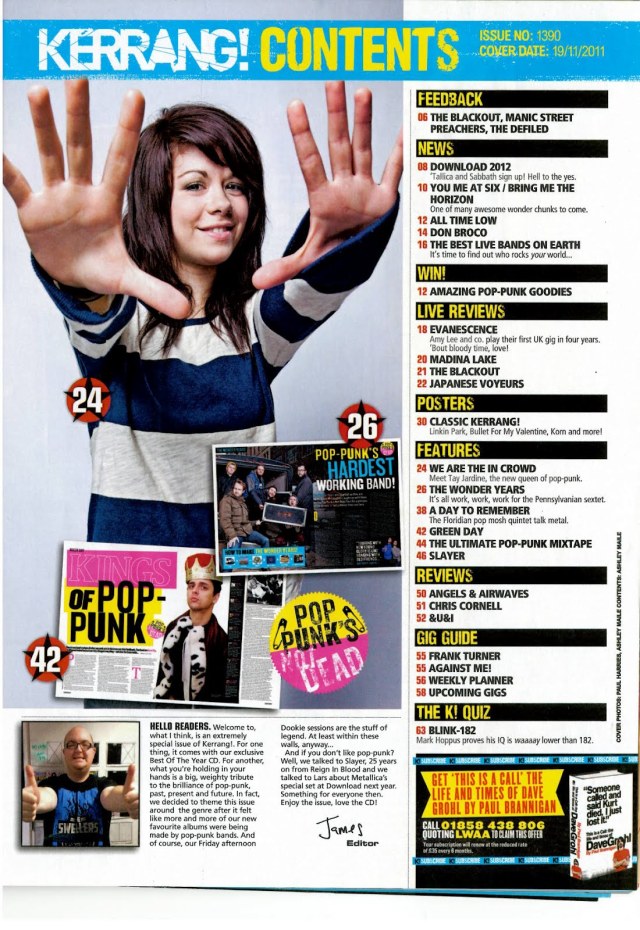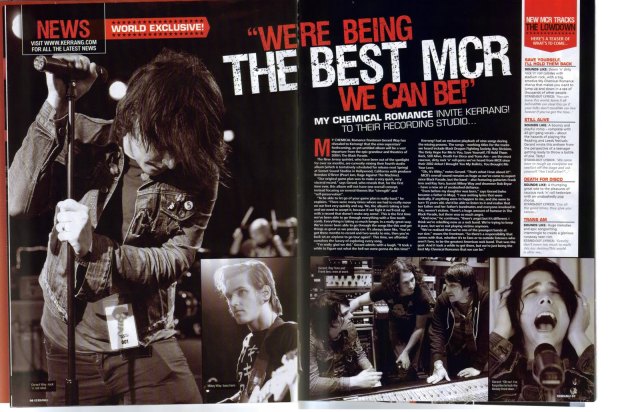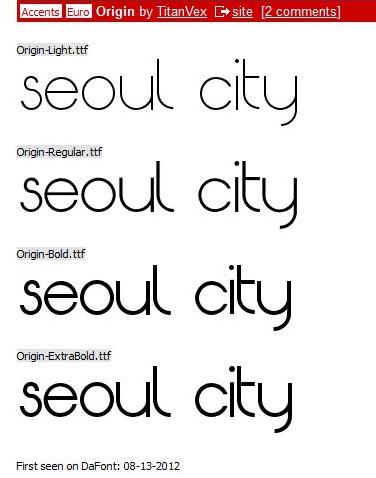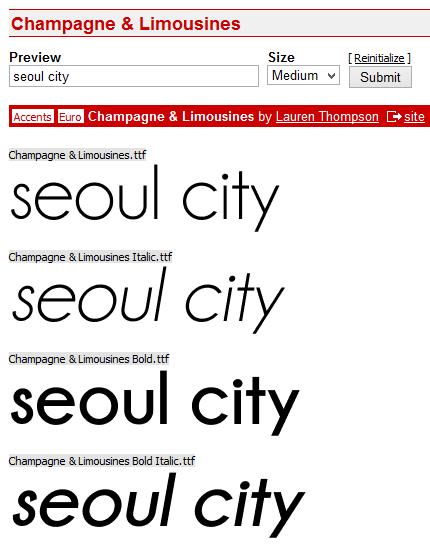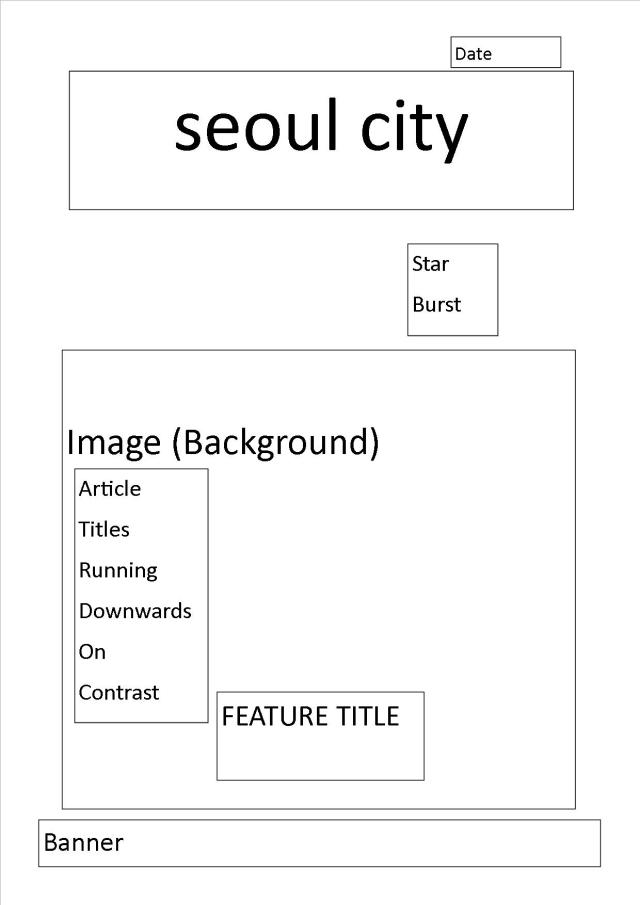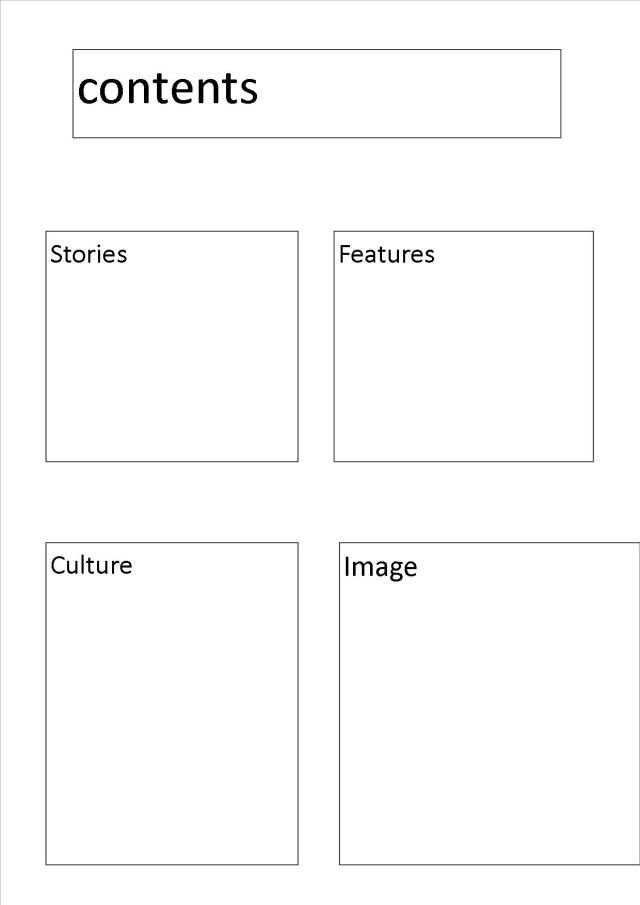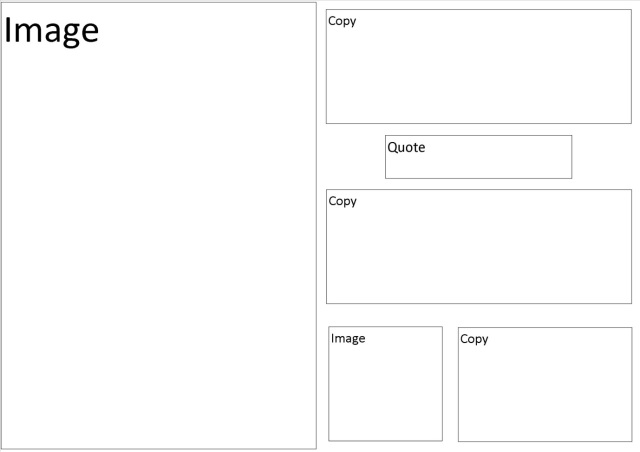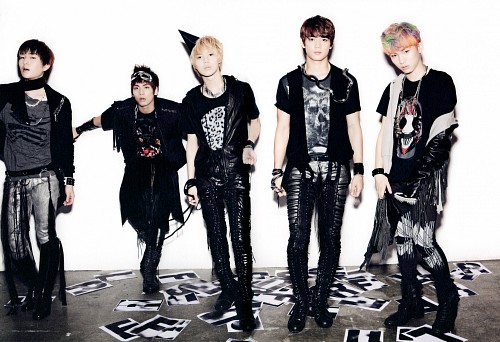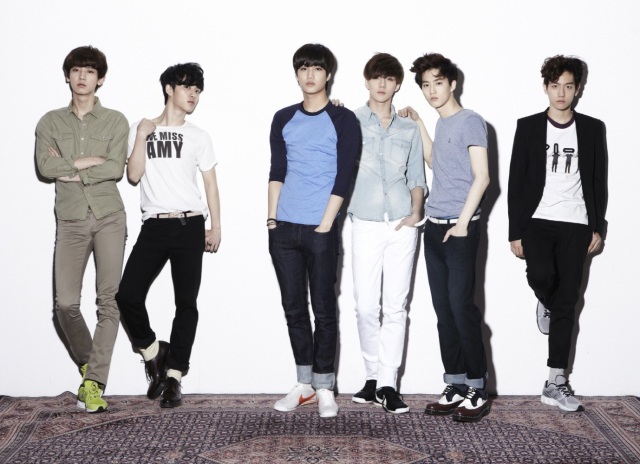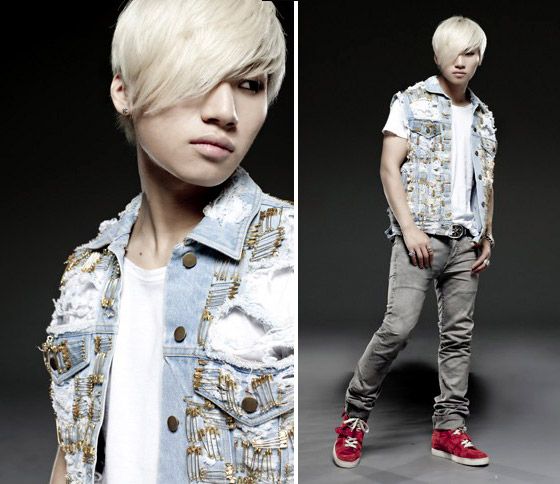Research
Final Magazine
Exploring Values/Ideologies of Different Music Magazines
The ideology of a magazine is what it markets itself on and relates strongly to the persona of its target audience. This is what the magazine stands for and its values.
NME
-Very music oriented – focuses more on the art of music itself rather than commercialism
– Despite its ‘indie’ feel, it is a mainstream media product
-Contains a nostalgic approach to music
-Bold colour scheme makes the magazine look daring and serious
-A new media within the industry
– Involvement in politics
We Love Pop
-Commercial-looking
-Bright colours suggest a predominant female audience
-Pop music is a dominant theme
-Completely new music – non-nostalgic
-Attention-grabbing text
Researching Target Audiences of Different Music Magazines
I looked at different music magazines in order to see the differences in their target audiences. I did this by looking at the magazine in the perspective of a consumer and using my knowledge of social demographics to decipher who the magazine is aimed at.
Bromide
Gender: Female
Age: 12-19
Income: £0 – 2400
Typical Job: Student/Part-time work
Leisure Activities: Listening to music with friends, dancing, YouTube surfing
Korean Pop
Gender: Female
Age: 18-25
Income: £2400 – £5000
Typical Job: Student/Part-time worker/Graduate
Leisure Activities: Singing, acting, reading
Here, you can see that I have purposefully chosen two different music magazines of the same genre. This allows me to specifically see the difference in the demographic as opposed to the obvious differences because of the difference in genre.
I have noticed how magazines can use factors such as colour scheme and the style of copy on the cover to attract a certain category of person. Also, the maturity level of the magazine can correlate to the maturity level of its buyer.
NME and UNCUT Readers
Demographic
NME
Average Age: 23
Percentage of Male Readers: 85%
NME attract a mainly male and young adult reader.
UNCUT
Average Age: 41
Percentage of Male Readers: 96%
UNCUT is more appealing to a mature audience and have a minority female market.
Lifestyle
Music is an important part of the life of an NME reader. They are the type to buy a lot of music and attend gigs often. Also, being a young market, they are familiar with modern technology.
As for UNCUT, almost half of its readership is also interested in film. This shows that the average reader is not as much of a full-on music fan as an NME reader. UNCUT readers generally prefer to visit the cinema instead of music gigs.
Advertising Companies – Which Kind Would Advertise Themselves on the Magazines?
NME – Skincare for teenagers, clothing, video games
UNCUT – Jewellery, perfume, cinemas
NME’s ads in their magazines would be companies aiming for a younger audience whereas UNCUT’s ads would be companies aiming for a more mature audience.
This research then led me to begin to think about what kind of target audience I would want my own magazine to attract.
Genre: K-Pop
Age: 12-25
Gender: Female/Male
Income: £0-£35K
Job: Student/Part-time worker at retail outlet
Appearance: Textured/Volumised hair, fitted clothing, colourful look
Favourite Music: K-Pop singers and idol groups
Idols: Big Bang, 2NE1, SHINee, Super Junior, SNSD, BoA
Leisure Activities: Dancing, singing, learning languages, eating out
I wanted to attract as broad of an audience as possible because my genre already has a niche market within the UK. My audience would range from very young to young adults and although my most popular gender will be determined by the artist on the cover, I wanted to attract both for different reasons outside of superficiality. My audience would possibly have a part-time job or may even be a post-graduate student starting out in full-time work. Their appearance would be strongly inspired by K-Pop artists which means that there will be a lot of effort put into their hair and they will rarely wear anything that is not tight and fitting. Their favourite kind of music would be K-Pop and their idols would most likely be some of the more popular music celebrities in South-Korea. In their spare time they would possibly try to be like their idols by dancing and singing to their favourite songs. Also, as they are an international audience, they could possibly have an interest in learning languages as the majority of K-Pop followers in the UK are not fluent in Korean. In order for the audience to delve into the Korean culture, they may also want to eat at Korean restaurants and visit Korean attractions in the UK.
I also created a back-up demographic for a separate genre in the case that I changed my mind.
Genre: Blues
Age: 18-50
Gender: Female/Male
Income: £3K-£40K
Job: Part-time/Full-time in a commercial company
Appearance: Country-look, relaxed jeans, loose shirt
Favourite Music: Blues, Jazz
Idols: Frank Sinatra, Jason Mraz
Leisure Activities: Jazz club, dining with friends
Investigating the Market
To conduct my research was initially difficult because I quickly realised that my K-Pop magazine would be filling a gap in the UK market – the first K-Pop magazine in the UK. However, with this in mind, I went on to research magazines of various genres.
There is a wide range of types of magazine to cater for almost every single interest and hobby. The more popular and internationally circulated genres are fashion, entertainment, and music. There are also niche categories that are specifically produced for people who have an interest in a certain lesser marketed genres.
Entertainment magazines cover a wide range of sectors from the entertainment industry. This includes television, music, and film. Magazines such as Heat or Glamour focus a lot on celebrities within these industries and are often referred to as “Celeb Mags”.
Music magazines focus on just music and possibly elements related around it.
In terms of pricing, both NME and Kerrang sell their copies for £2.30. However, I decided that as my magazine was filling a much-needed gap in the market, I could afford to charge more.
There are also music magazines that specify in a certain genre of music. This is the type of magazine that I am creating – a K-Pop based one. However even these magazines include content outside of the genre but only things which are similarly related. For example, my K-Pop magazine might include a feature of a Japanese group because K-Pop and J-Pop have a lot of links with each other.
Researching Conventions
Front Cover Conventions
Most magazines follow conventions with their front cover regardless of genre. The title is always at the top and is the largest copy on the page. This is also the logo of the magazine therefore it is an important part of the magazine brand. The second largest copy on the page is the subheadings followed by the other copy on the page which is usually hints at what is inside of the magazine in order to gain interest. The central image can either be an artificially taken image at a studio or a ‘papped’ photograph which is common in celebrity gossip magazines. There is also a third type of central image which is a tribute image which can be used if the magazine want to commemorate something such as the passing of a well-known figure. Starbursts usually come in the form of a shape or some manipulated cope and are usually one of the first things that customers see after the title if not even before. Some covers also have a banner at the bottom which usually advertises a competition or free gift inside the magazine.
Contents Page Conventions
A contents page organises all of the pages within the magazine using categories, article titles, and page numbers. The goal of a contents page is to not only point the reader in the direction that they want to go within the magazine but also keep them attracted to the content inside. This is done with the use of images on the contents page which lead to a feature within the magazine. Also, starburst can be used on the contents page in the same way as they are used on the front cover.
Feature Page(s)
Feature pages are a minimum of one double-spread but can span onto to several. They keep a strong focus on high-quality images. The article will usually explore a certain story and a lot of the time contains an interview of some sort. There is usually a lot of copy on the page therefore the images need to draw the audience in enough for them to read it.
Researching/Designing Masthead
Possible Titles
Koreatown
K-Poppin’
Anyeong Korea
Hongdae
Seoul City
Final Decision: “Seoul City”
I chose this title because of various reasons as to why it would represent my K-pop magazine perfectly. Seoul is the capital city of South-Korea and therefore the world’s hub for K-Pop. Also, in a very popular English version of the K-Pop song by 2NE1 called ‘Can’t Nobody’, the lyrics – “Riding down Seoul City…” are used and are very familiar with a lot of K-Pop fans. The title is alliterative so it is easy to say and remember.
The Look
I decided that I wanted my masthead to be plain and classy with a touch of informality. This would allow my magazine to be viewed as a mature magazine for a genre which has a lot of childish overtones.
I wanted a very simple and well-shaped sans-serif font. Also I was inspired by Billboard and the idea of filling in the gaps of the letters with colour.
Font
I used a font website called DaFont (http://www.dafont.com) to look for potential fonts that I could use. The website had an entire section on sans-serif font which made it very useful for me in my search of finding the perfect one. I was able to input my copy ‘seoul city’ and see what it looked like in various fonts.
I was originally going to use the font Champagne & Limousines because it was exactly the style I wanted for my magazine cover. However, I came across an even better font on the Microsoft system called Tw Cen MT. This font was not only perfect but also practical.
I made the font bold and filled the gaps in the letters the same colour as the letters themselves to give it a quirky yet elegant look.
Drafting Page Layout
Planning Images
I was familiar with the style of K-Pop boy-groups and I wanted my images to reflect the same theme.
I looked at how the subjects in these images were posed and also their facial expressions. I looked at how they were positioned with each other and their spacing. I also took note of any editing that I noticed in the photos such as colouring, brightness, and contrast manipulation.
Individual shots were also important for my production so I analysed more close-up images and paid closer attention to facial expressions.
I would use the information from my research as well as my prior knowledge of K-Pop fashion to create my own images.
